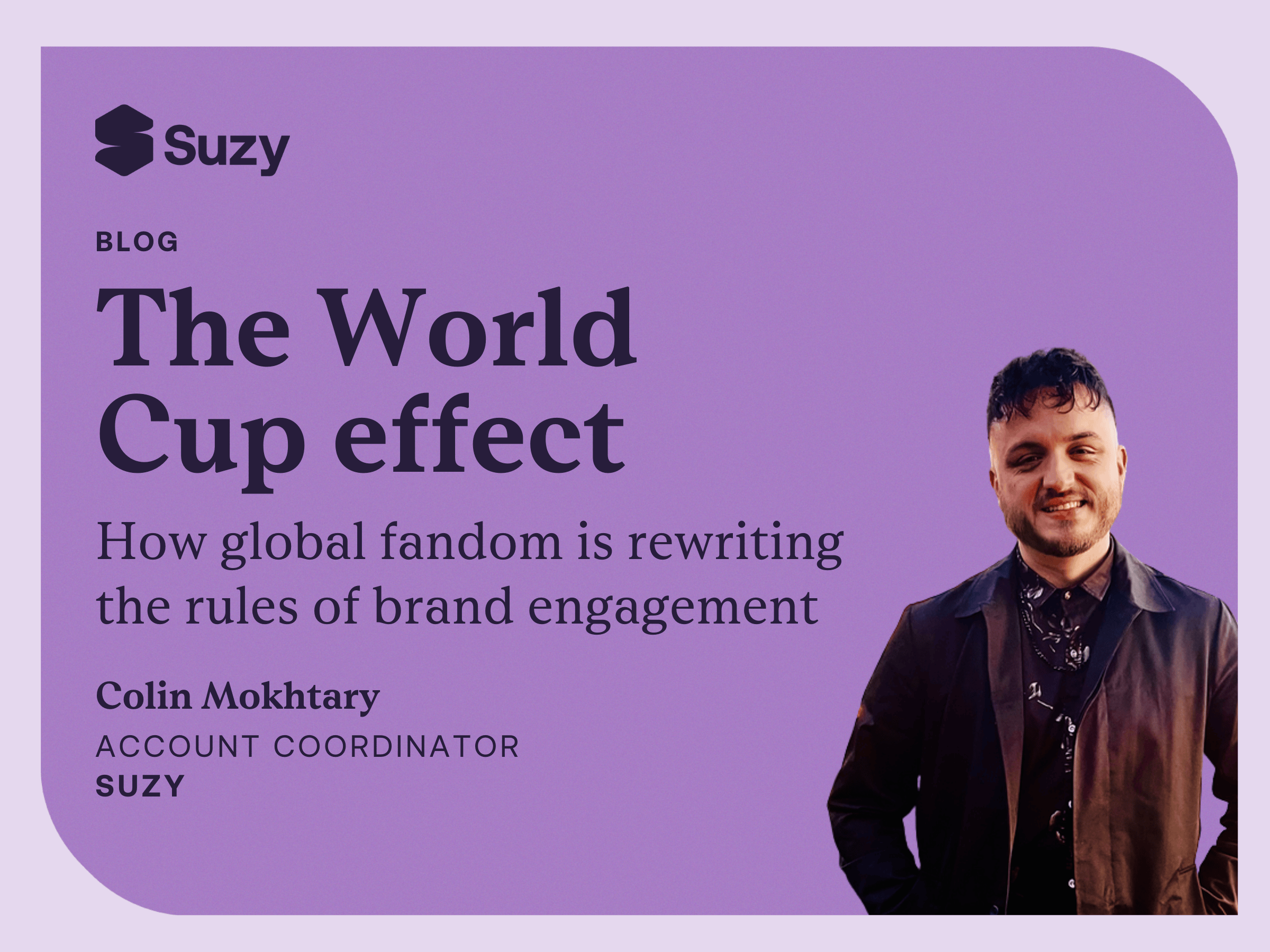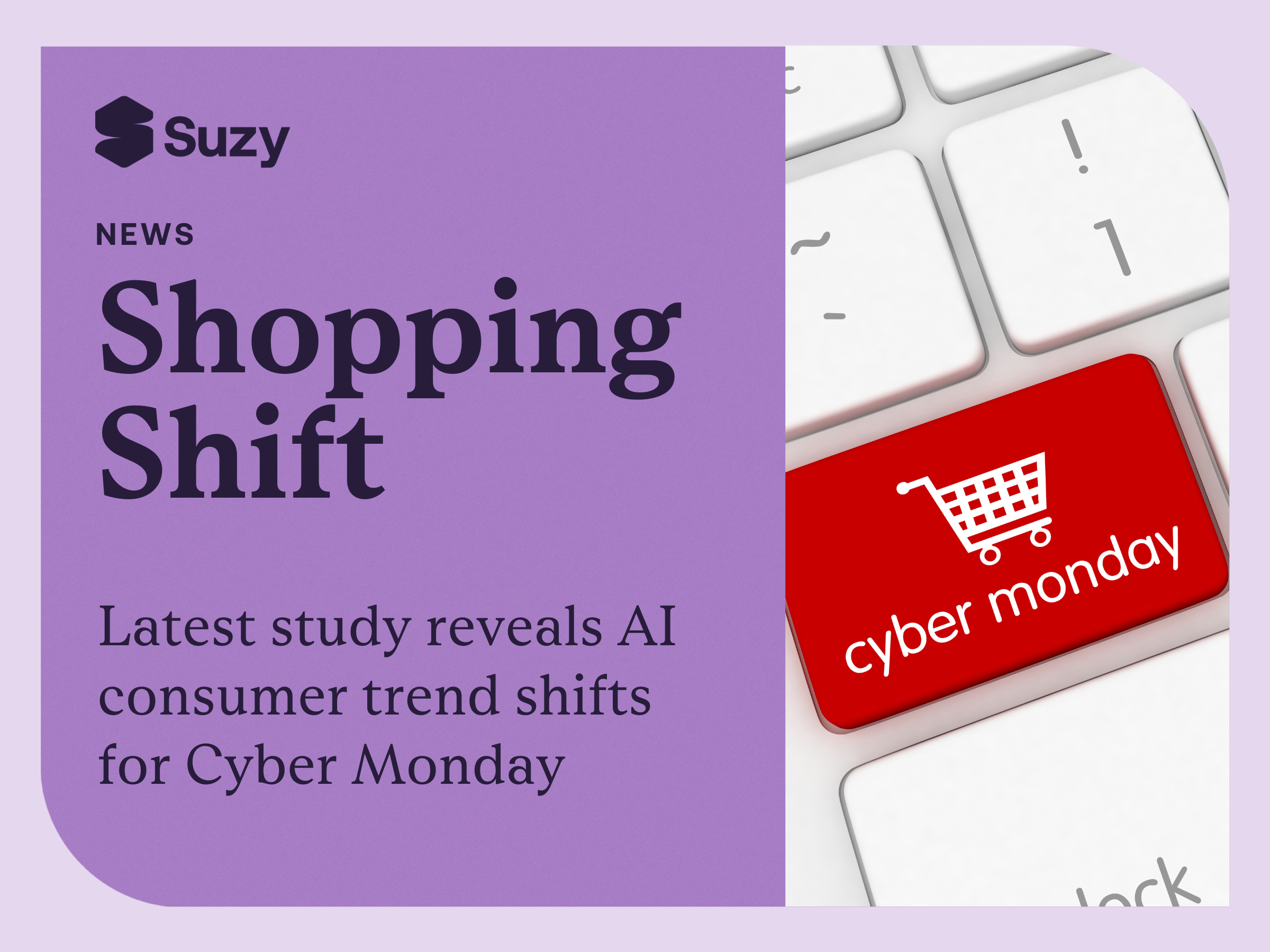In the dynamic field of market research, qualitative market research methodologies have proven to be invaluable, providing rich and nuanced insights into consumer behavior, attitudes, and experiences.
However, qualitative research is also subjective. Rather than dealing with cold hard facts, as quantitative research does, qual deals with thoughts, feelings, and emotions. That means that researchers must interpret their findings, which can introduce their personal biases or perspectives.
In this guide, we’ll go through a comprehensive exploration of qualitative market research, covering key methodologies, the process of conducting research, and the exciting potential of artificial intelligence (AI) in this realm. From in-depth interviews to focus groups, to video open ends and in-home usage tests (IHUTs), we delve into the unique strengths and applications of each method. We also tackle important considerations such as bias reduction and participant selection, and discuss the role of AI in transforming qualitative data analysis.
Whether you're a seasoned researcher or new to the field, this guide offers valuable insights into the depth and potential of qualitative market research so you can maximize its potential. Let’s get started.
Table of Contents
- What is qualitative market research?
- How do you conduct qualitative market research?
- Qualitative market research methods
- Advantages and challenges of qualitative market research
- Best practices in qualitative market research
- AI and qualitative market research
- Qualitative market research at Suzy
1. What is qualitative market research?
Qualitative market research helps brands gain a deep understanding of consumer behavior and why they make the decisions they do.
It meticulously explores the “why” and “how” of decision-making, as opposed to “what”, “where”, and “when”, which are primarily the focus of quantitative research. This unique approach offers valuable insights into the consumers' minds that transcend beyond mere numbers, making it a crucial component of any robust research strategy.

Breaking down the differences between qualitative and quantitative research
Often, qualitative and quantitative market research are pitted against each other, as if there’s only one best choice. However, each serves different purposes and provides unique insights.
- When to use quantitative research: Do you want to know where consumers shop, what they buy, and when they shop for that product? Quantitative methods are the right choice. Quant is also a great way to screen participants for a qualitative interview.
- When to use qualitative research: Do you need to understand the “why” behind a stat you found in your quantitative data? Or how they use the products they buy? Or even how they talk about certain categories? Qualitative research digs into all the behavior behind the scenes that can be critical for making business decisions and can give color to your quant findings.
Mixed methods research
At Suzy, we believe that understanding consumer behavior requires connecting quantitative and qualitative in mixed methods research. Both are critical for context—and help you iterate for deeper learning. During your research process, it’s best to tap into both quant and qual to get both context and hard data so you can fundamentally gain a deeper understanding of the consumer.
Back to table of contents.
2. How do you conduct qualitative market research?

Conducting qualitative market research is a meticulous and iterative undertaking, and requires some preparation—especially if you want to do in-person interviews.
- Start with identifying the business problem and identifying your objective(s). This is critical to all market research, whether quant or qual, and forms the entire backbone of your study. It informs your methodologies, data collection, and even analysis.
- Write an objective or purpose statement that includes the general question or topic you want to discuss, who your target participants are, and how you plan to use the information you can from your research. Think about what success looks like at the end of the research project to help inform this portion.
- The next step is selecting the appropriate research methodologies. The choice of research method, such as focus groups or in-depth interviews, depends on the nature of the problem, the target audience, and the resources available. Each method has its own strengths and weaknesses, and the key is matching the method to the research objectives. The method you choose may require additional research partners, like moderators, notetakers, translators, or recruiters. To learn more about qualitative research methods, jump down to the next section of this guide.
- Qualitative research design is an art in itself. It involves crafting a quant screener and putting together a discussion guide for qualitative research that directs the conversation toward the research objective while allowing spontaneous and unanticipated insights to emerge. The guide should focus on asking open-ended questions that encourage participants to share their thoughts and experiences in depth. You may also need to prepare stimulus for your respondents to react to.
- Next, you’ll need to recruit participants and schedule interviews. Once you have enough participants to help you meet your research goals, you can conduct the interviews and let the learning begin. In-person qualitative interviews may take a lot of organizational time and require travel, taking up to several weeks. Online qualitative research can happen fast—within two to three days.
- Now, it’s time to dig into your qualitative data. But what is qualitative data, anyway? Far from the hard data found in quantitative research, qual is unstructured data that includes general sentiments, expressions, or attitudes consumers displayed during your interview. You can review transcripts, take notes on what stands out, and find commonalities across participants. Or you can analyze open-ended responses from a survey.
- Data analysis and interpretation are perhaps the most intellectually demanding steps in the process. This is where researchers make sense of the qualitative data, identifying patterns, themes, and interesting outliers. Methods of qualitative analysis can vary widely, and the choice of method depends on the nature of the data and the research objectives. Having unstructured data makes it harder to find trends, but not impossible! Historically it’s been done through manual coding. Now with AI, market researchers can speed up the process of qualitative analysis—learn more here.
- The final step in the process is the reporting and presentation of findings. This involves distilling the key insights from the research into a succinct and compelling narrative that can inform strategy and decision-making. A great report highlights key findings for each objective area and creates thoughtful recommendations or implications for a client’s business. An impactful report tells a story that not only summarizes the findings but also brings the consumer to life for your stakeholders. Effective reporting might involve the use of video showreels, infographics, or detailed written reports.
Back to table of contents.
3. Qualitative market research methods

There is a diverse range of methodologies utilized in qualitative market research, each offering unique advantages. In-depth interviews, for instance, allow for a detailed exploration of individual perspectives, drawing out rich insights that might not surface in a group setting.
Ethnography studies are another individual-focused methodology, allowing you to follow a single participant during a task, like shopping at the grocery store or checking in with them over time. And in-home usage testing allows you to send a product home with a target consumer to understand how they might use it and integrate it into their lives.
Group insights, however, explore the dynamics between people and how people respond to the opinions of those around them. Focus groups bring a group of target consumers together to generate a wealth of ideas and stimulate open discussion, often shedding light on diverse viewpoints and shared experiences. You can also run qualitative interviews with two people (dyads), and three people (triads). Or you could even tap into a discussion board with several participants.
Let’s take a look at some qualitative market research methods in depth.
In-depth interviews (IDIs)
In-depth interviews provide an opportunity to explore individual perspectives in detail. They allow researchers to probe into specific issues—especially sensitive topics. With an IDI, you can uncover rich, complex insights about consumers' experiences, motivations, and attitudes. They are highly flexible and adaptable.
In-home usage testing
Want to see how a consumer uses your product? Go beyond Zoom and take your product to your consumer’s house with an in-home usage test, or IHUT. Capture live reactions as consumers unbox your product, and see how it might fit into their day-to-day lives. You can even expand it into a digital format by tracking a customer user journey and their in-app experience.
Video open ends
With asynchronous and unmoderated video open ends, you can capture in-the-moment experiences with your target consumers to uncover hidden sentiments and dig deeper. Video open ends work just like open-ended questions in surveys, but also help you capture expressions and hidden sentiments you might otherwise miss.
Remote focus groups
Your consumers don’t live in a silo—everyday interactions influence their thoughts, feelings, and behaviors. Conduct online focus groups to leverage the group setting for exploring concepts, building empathy, and getting a range of critical qualitative insights—all in one session, all online. Just be sure to ask the right questions during your focus group.
Back to table of contents.
4. Advantages and challenges of qualitative market research

Every research methodology offers benefits to researchers and has gaps in the types of insights they provide. When it comes to qualitative research, researchers can do the following:
- Gain a deeper understanding of consumer behavior. With qualitative research, you can get to the root of why consumers make certain decisions, and what drives them to buy. This creates opportunities for marketers to better target their messaging, create a more personalized customer experience that resonates with audiences, and drive greater ROI.
- Identify what behaviors drive trends and patterns. By analyzing consumers' attitudes, beliefs, and desires, qualitative research can help marketers spot emerging trends that might not be immediately apparent in quantitative data. This early identification of trends allows businesses to stay ahead of the curve, offering products or services that align with evolving consumer expectations.
- Create informed product design. Qualitative research helps marketers understand the pain points of their customers, which is important for product design and development. By incorporating insights from qualitative research into product design, businesses can ensure they are creating products that meet customer needs and exceed expectations.
- Make data-driven decisions. Leveraging both quantitative and qualitative data yields a richer understanding of customer behavior than either one can provide individually. The combination of these two data sources enables companies to make informed decisions that are supported by data.
Despite its numerous advantages, qualitative research also comes with its own set of challenges.
- One of the major challenges is the time and resources it requires. Collecting, transcribing, and analyzing qualitative data can be a lengthy and labor-intensive process. Using online qualitative market research companies, like Suzy, can help speed the process up if the platform includes quant, qual, and a built-in audience.
- The subjective nature of qualitative research may also pose a challenge. Interpretations can vary based on the researcher's own biases or perspectives. Another challenge lies in ensuring the credibility and reliability of the results, due to the inherently subjective and interpretive nature of qualitative data.
- Lastly, the generalizability of qualitative research findings may be limited due to the small, non-random samples typically used in this type of research. It's worth noting that emerging digital tools and AI technologies are starting to address some of these challenges, paving the way for more efficient and robust qualitative research methodologies.
Back to table of contents.
5. Best practices in qualitative market research

To conduct qualitative research that uncovers actionable insights, it’s important to take steps to prevent bias during analysis, find the right sample, and ask good questions. It’s also important to document your findings and tap into technology to help you speed up the process and uncover great stuff.
Prevent bias
Ensuring objectivity and reducing bias is important in all research, but perhaps especially so in qualitative research when the results must be interpreted. Bias can be introduced in various ways, from how questions are framed to the interpretation of responses. Take steps to mitigate bias, such as double-blinding and peer review of discussion guides and reports.
Choose the right sample
The quality of your findings hinges on the quality of your sample. Finding the right people to sit across from a moderator to have a thoughtful discussion about the topic is critical to gaining insights into consumer behavior. We created a free sample size calculator to help you with part of this process, which you can use below.
Ask the right questions
Questions in qualitative research need to be open-ended, neutral, and focused, subtly guiding participants to reveal their thoughts and feelings. It's about striking a balance between exploring the research objective and allowing the conversation to flow naturally. Check out a few examples to get started:
- What motivated you to purchase this product or service?
- How have your experiences with our company been so far?
- What factors do you consider when making purchasing decisions?
- How does our product compare to other similar products in the market?
- What features of our product do you find most valuable?
- Do you have any suggestions on how we could improve our product/service?
- How would you rate the overall customer experience with our brand?
Lean into technology
Leveraging technology has revolutionized qualitative market research. Digital tools have broadened researcher's ability to interact with participants, collect data, and analyze responses. Online focus groups, video interviews, and AI-powered data analysis have made research more efficient and accessible than ever.
Back to table of contents.
6. AI and qualitative market research
In the continually evolving realm of qualitative market research, innovation is the name of the game. One of the most exciting, forward-thinking developments in the field of market research is the application of AI.
AI is revolutionizing the way researchers process and analyze qualitative data. These technologies have the potential to automate painstaking tasks such as transcription, coding, and theme identification, thereby streamlining the research process significantly. By automating the process of transcribing, categorizing, and analyzing qualitative data, AI can reduce time, minimize human error, and potentially uncover deeper insights through the use of complex algorithms that can identify patterns and trends that might not be easily visible to human analysts. Best of all, AI can free human market researchers up for more important and strategic tasks
Learn more about AI at Suzy and our new suite of AI-powered solutions
Back to table of contents.
7. Qualitative market research at Suzy
Unleash your research with Suzy’s qualitative research offering on our end-to-end consumer insights platform. With integrated quant, qual, and high-quality audiences, you can conduct iterative research in one place to drive consumer-centricity in real time for your brand. With Suzy, you can:
- Seamlessly transition between quant and qual.
- Retarget your audience by seeking intel, showcasing ideas, and shipping products.
- Receive live responses quickly, ranging from just a few hours for asynchronous input to less than 72 hours for live interviews.
Discover how you can do more with Suzy’s consumer research platform today—book a demo with our team to see how the platform works and begin driving consumer-led growth.
More resources on qualitative market research
- Looking for jobs in qualitative research? Check out suzy.com/careers to see the roles that we’re hiring for.
- Want a verified badge in qualitative research? Check out our certified Qualitative Research course at Suzy Academy. Created in partnership with MRII, you can complete the course to receive a digital badge that recognizes your skills.
- Questions about how qualitative methodologies work on the Suzy platform? Check out our support library for everything you need to get started.
.webp)







